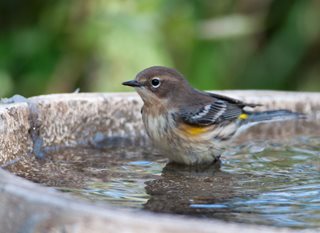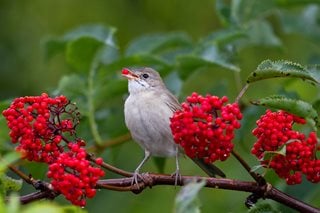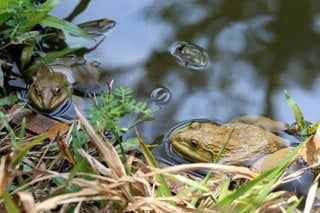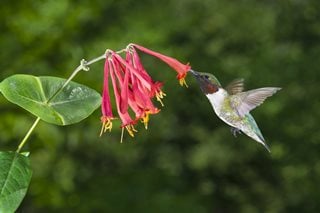10 WAYS TO START BUILDING A GARDEN FOR WILDLIFE
Turn your garden into a wildlife sanctuary with these eco-friendly tipsWith natural areas diminishing, we must raise the bar of what we ask of our landscapes. We can no longer be satisfied with gorgeous gardens that are not also designed to support ecosystems.
Here are ten easy ways to fill your garden with biodiversity and beauty:
-
1. Plant an oakThere are native oaks for just about every state in the U.S. These trees form the hub of a native garden, providing habitat and food. In most counties, oaks support more than 450 species of moths and butterflies. Moths and their caterpillars are important food for birds.

Photo by: Gerald A DeBoer / Shutterstock.
Learn more about growing oak trees: Planting Oaks.
-
2. Add a bird bath Keep it shallow! Birds will not use a bath where the water is deeper than their legs. A bath 1 inch deep by 15 inches diameter will attract avian friends. If you have access to a large stone, you can carve a shallow bird bath into it for a natural look.
See a Portland garden full of birds: A Naturalistic Garden Welcomes the Birds and the Bees.
-
3. Create a layered planting or border If you have the space (it can even be as small as 10 by 10 feet), build a multilayer planting: Add a row of canopy trees (maples, hollyleaf cherry); weave in medium-sized trees and tall shrubs (willows, toyon); tuck in shrubs (sweet pepperbush, manzanita); fill in with herbaceous plants (native grasses, salvias); carpet with groundcovers (spring ephemerals, checkerbloom).
-
4. Build a native arborUse branches of native trees to build organic allées and arbors that are nice to look at and good for wildlife. You can grow native Halesia diptera over an arbor for a formal look or a native vine for an informal feel.
-
5. Add groves or thickets If you have an underutilized space, plant groves of native trees, berry bushes, or coyote brush to provide food for yourself and the birds. For a clean look, plant a single species.
-
6. Plant native fruit trees Pawpaws, persimmons, black cherries, and serviceberries support birds, caterpillars, and butterflies-and supply delicious produce for you.
-
7. Screen with native hedgesWhen creating a screen, plant native shrubs such as Alabama snow wreath or coffeeberry to provide habitat and food for wildlife. Don’t hesitate to use several species that work together, including an occasional red cedar or incense cedar for accent.
-
8. Encourage pools and pondsAdd a pool or pond in an area of your garden where water collects naturally. Even a small one can support several species of frogs as well as toads, spring peepers, turtles, and more. Line it with water lovers like willows, buttonbush, winterberries, sedges, and rushes.
-
9. Make a meadow Even a small 5- by 10-foot meadow garden can supercharge a garden with wildlife. Adding a mix of native milkweeds and umbellifers (plants that flower in umbrella-shaped clusters coming off a single stem) can help fill a garden with activity from butterflies, bees, and birds.
See more: How to Create a Meadow Garden.
-
10. Grow vines Native vines are a secret weapon of wildlife gardening—especially in a small garden, where letting natives climb up arbors, over trellises, and along fences maximizes limited space. Hummingbirds will often visit trumpet honeysuckle and native clematis.

Photo by: Bachkova Natalia / Shutterstock.

Photo by: Ekachai Stocker / Shutterstock.

Photo by: Patrick Jennings / Shutterstock.
Bonus resource: A web tool recently launched by the National Wildlife Federation makes it easy to discover which indigenous plant species are the very best at supporting the insects that drive local food webs. Simply enter your zip code for a ranked list of the plants in your county that produce the most caterpillars and thus support the most wildlife. Access the tool here: Native Plant Finder.
RELATED:
Garden Pond Attracts Wildlife
Native Plants - How & Why to Grow Natives
Woodland Garden Design
Eco-Friendly Gardens
Doug Tallamy is an author, scientist and professor at the University of Delaware. He is passionate about helping homeowners, gardeners and designers create ecologically driven gardens.
These tips originally appeared in “Going Wild”—an article about bringing the wonders of biodiversity into your garden—in the Spring 2016 issue of Garden Design magazine.
